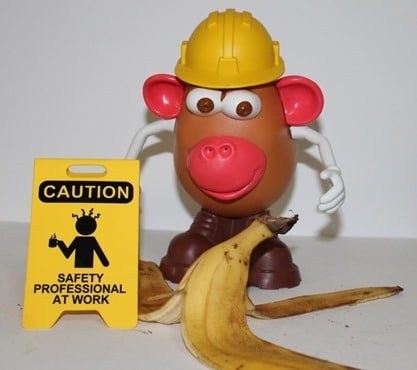Originally posted on August 15, 2014 @ 1:31 PM
Take Safety Seriously
 This is the edict of the Queensland Resource Council on 13 August 2014, ‘take safety concerns seriously’. The assumption of course is that workers don’t take safety seriously, what an amazing assumption. What else, when ones reality is dictated by injury data. When the data is low we take safety seriously, when the data is high the industry has slipped into complacency. What a shame injury data is not a measure of culture.
This is the edict of the Queensland Resource Council on 13 August 2014, ‘take safety concerns seriously’. The assumption of course is that workers don’t take safety seriously, what an amazing assumption. What else, when ones reality is dictated by injury data. When the data is low we take safety seriously, when the data is high the industry has slipped into complacency. What a shame injury data is not a measure of culture.
So, workers want to hurt themselves each day in Queensland mining, workers are complacent and don’t care about safety. What other conclusion could one come to in the zero harm state. Please, this is not an critique on Queenslanders but rather an ideology in the state that has become mandated by government. (Might I also add the ‘can do’ language adopted by the Premier of the state also has it’s own trajectory and by-products. We had a politician in Canberra in the 1990s who went by the mantra of ‘can do’ that led to the Canberra Hospital Implosion tragedy).
When one’s goals and language are perfectionist and absolute the only trajectory and attribution is blame, not on self, only on others. In our personal life we expect tolerance and forgiveness, but in our professional life zero wants intolerance and punishment. When people don’t actually understand what complacency is, the only recourse is the discourse of blame. Obviously un-safety is a choice we make (https://safetyrisk.net/is-safety-a-choice-you-make/) because complacency is evil (https://safetyrisk.net/is-complacency-evil/). If we were to reign zero and intolerance over our children and partners, our relationships would last as long a snow flake in a firestorm.
One of the interesting comments made in the news report from the council is ‘employees need to know that they enjoy the full support of the sector’s most senior executives in raising legitimate safety concerns without fear of reprisal’ How interesting, what is the fundamental discourse in the zero harm state? When one lays out absolutes and perfectionism before every worker in slogans of zero tolerance, zero harm and zero zero, who in their right mind would be a whistleblower? I read from a website the other day in Queensland from an energy provider and the message of ‘all accidents are preventable’ was plastered all over their safety pages. If words, framing and priming matter, how could one think that workers would seek to report against the mantra of the company?
The article goes on ‘Workers in the mining industry should share any concerns about their safety with their supervisors and where necessary ‘take it to the top’. Great aspiration, but not going to happen when the discourse is focused on absolutes, intolerance and perfectionism. The reality is that the language we use sets the culture we live in. The discourse (political power) embedded in our language sets the hidden tone for how to behave. There are always trade offs and by products for the cultures we chose and the language we use. In this case, the natural result of intolerance and perfectionism is silence, fear and under reporting. You can’t have it both ways, preach zero and beg for confession. We learn at an early age that confession often attracts reprisal, this is why so many of or leaders when caught out in unethical practice always run to denial as the first course of action (it recently cost the Premier of NSW his job). When the probability is crucifixion, the best option appears to be denial and silence.
Weick’s concepts of organisational sensemaking and collective mindfulness on the other hand encourage confession without reprisal and interestingly Weick makes clear that this cannot exist in a climate or culture of zero.



Do you have any thoughts? Please share them below